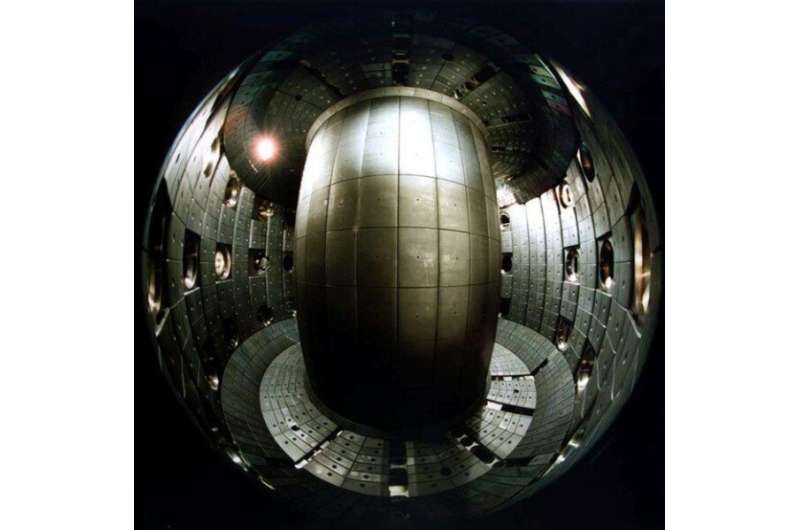Negative triangularity—a positive for tokamak fusion reactors

Tokamak devices use strong magnetic fields to confine and to shape the plasma that contains the fuel that achieves fusion. The shape of the plasma affects the ease or difficulty of achieving a viable fusion power source. In a conventional tokamak, the cross-section of the plasma is shaped like the capital letter D. When the straight part of the D faces the "donut hole" side of the donut-shaped tokamak, this shape is called positive triangularity. When the plasma cross-section is in a backwards D shape and the curved part of the D faces the "donut hole" side, then this shape is called negative triangularity. New research shows that negative triangularity reduces how much the plasma interacts with the plasma-facing material surfaces of the tokamak. This finding points to critical benefits for achieving nuclear fusion power.
One of the challenges in fusion energy science and technology is how to build future power plants that control plasmas many times hotter than the sun. At these extreme temperatures, interactions of the plasma with the material walls of the power reactor must be controlled and minimized. Unwanted interactions occur due to turbulence in the boundary region of the plasma. This research shows that the boundary turbulence in negative triangularity plasmas is much reduced when compared with that occurring in plasmas with a positive triangularity shape. As a result, the unwanted interactions with the plasma-facing walls are also much reduced, leading in principle to longer lifetimes for the wall and a reduction in the risk of damage to the wall, something that could shut down a reactor.
Scientists know that, in tokamak fusion devices, core plasma shapes with negative triangularity exhibit a substantial increase in energy confinement compared to plasmas with positive triangularity. Negative triangularity plasma shapes also show reductions in the fluctuation levels of the core electron temperature and density. This by itself makes negative triangularity plasmas promising candidates for a future fusion power reactor.
The new research reported here shows that the sign and degree of triangularity also have a large effect on plasma edge dynamics and power and particle exhaust properties, but scientists know relatively little about such effects. These experiments at the Tokamak à Configuration Variable (TCV), located at the École polytechnique fédérale de Lausanne (EPFL) in Lausanne, Switzerland, revealed a strong reduction of boundary-plasma fluctuations and plasma interaction with the facing wall for sufficiently negative triangularity values. The researchers observed the effects across a wide range of densities in both inner-wall-limited and diverted plasmas. This strong reduction in plasma-wall interaction at sufficiently negative triangularity strengthens the prospects of negative triangularity plasmas as a potential reactor solution.
The research was published in Nuclear Fusion.
More information: W. Han et al, Suppression of first-wall interaction in negative triangularity plasmas on TCV, Nuclear Fusion (2021). DOI: 10.1088/1741-4326/abdb95
Provided by US Department of Energy





















